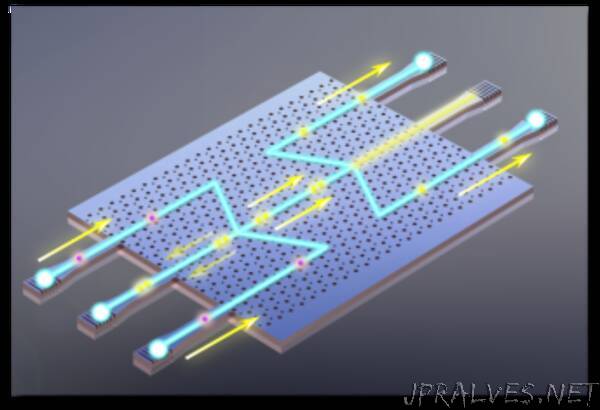
“The research team led by academician GUO Guangcan from University of Science and Technology of China (USTC) of the Chinese Academy of Sciences, collaborating with the researchers from Sun Yat-sen University and Zhejiang University, realized two-photon quantum interference in the structure of valley-dependent topological insulators based on the valley Hall effect. The study was published in Physical Rdepeview Letters.
Topological photonics has an application prospect in the research field of photonic chips due to robust energy transport prosperities. The key to topological phase transition is to generate an energy gap at certain degenerate points by breaking either the time-reversal symmetry (TRS) or inversion symmetry.
By breaking the spatial inversion symmetry of the system, the valley-dependent helical edge states travel in certain directions, known as Valley-Hall effect. Hexagonal lattice photonic crystals (PCs) with inequivalent sublattices can realize the valley-dependent topological insulators. More compact and sharp bending optical circuit can be realized, contributing to device integration and robust energy.
Quantum interference, as the core of photonic quantum information, remains to be verified in topologically protected PCs chip.
The researchers in this study designed and fabricated harpoon-shaped beam splitters (HSBSs) in silicon photonic crystals. The orientation of the electromagnetic phase vortex inside PCs with hexagonal lattice structure depends on lattice structure with different topological Chern numbers and its band position, forming two topological edges of different structures.”
